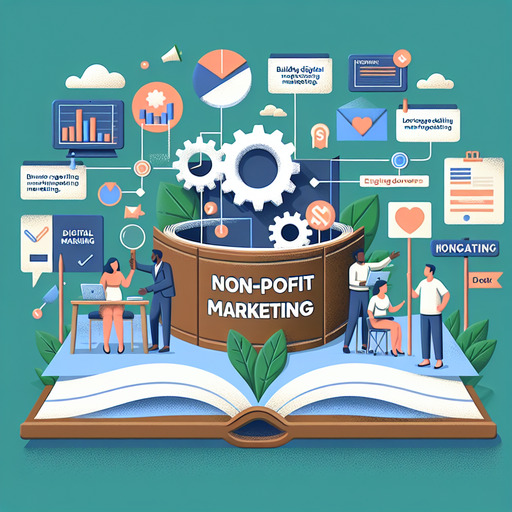
-
Table of Contents
- Effective Non-Profit Marketing Strategies: Engaging Donors and Amplifying Your Cause
- Understanding the Importance of Non-Profit Marketing
- 1. Building a Strong Non-Profit Brand
- 2. Leveraging Digital Marketing for Non-Profits
- 3. Engaging Donors Through Personalized Communication
- 4. Innovative Fundraising Marketing Techniques
- Conclusion: Amplifying Your Non-Profit’s Impact
- Questions and Answers
Effective Non-Profit Marketing Strategies: Engaging Donors and Amplifying Your Cause
In today’s competitive landscape, non-profit organizations must adopt innovative marketing strategies to stand out and effectively engage donors. With limited resources, non-profits need to be strategic in their approach to marketing, ensuring that every effort counts. This article explores actionable strategies for non-profit marketing, focusing on digital platforms, branding, and donor engagement.
Understanding the Importance of Non-Profit Marketing
Non-profit marketing is crucial for raising awareness, attracting donors, and driving engagement. By leveraging effective marketing strategies, non-profits can amplify their message and make a significant impact. Let’s delve into some key strategies that can help your organization thrive.
1. Building a Strong Non-Profit Brand
Your brand is the face of your organization. A strong brand communicates your mission, values, and impact, making it easier for donors to connect with your cause. Here are some steps to build a compelling non-profit brand:
- Define your mission and values clearly.
- Create a consistent visual identity, including logos and color schemes.
- Develop a compelling narrative that resonates with your audience.
For example, Charity: Water has successfully built a recognizable brand by focusing on transparency and storytelling, which has helped them engage a global audience.
2. Leveraging Digital Marketing for Non-Profits
Digital marketing offers cost-effective ways to reach a broader audience. Here are some strategies to consider:
- Utilize social media platforms to share stories and updates.
- Implement email marketing campaigns to keep donors informed.
- Optimize your website for search engines to increase visibility.
Consider the case of the ALS Association’s Ice Bucket Challenge, which went viral on social media, raising over $115 million for ALS research.
3. Engaging Donors Through Personalized Communication
Personalized communication can significantly enhance donor engagement. Here’s how you can achieve this:
- Segment your donor list to tailor messages based on interests and giving history.
- Use personalized thank-you notes and updates to show appreciation.
- Host exclusive events for major donors to strengthen relationships.
Statistics show that personalized emails can increase open rates by 29% and click-through rates by 41%.
4. Innovative Fundraising Marketing Techniques
Fundraising is at the heart of non-profit operations. Here are some innovative techniques to boost your efforts:
- Organize virtual events to reach a global audience.
- Implement peer-to-peer fundraising to leverage supporters’ networks.
- Use crowdfunding platforms to engage a wider community.
For instance, the Movember Foundation successfully uses peer-to-peer fundraising, encouraging participants to grow mustaches to raise awareness and funds for men’s health.
Conclusion: Amplifying Your Non-Profit’s Impact
By implementing these non-profit marketing strategies, your organization can enhance its outreach, engage more donors, and ultimately amplify its impact. Remember, the key is to be authentic, consistent, and innovative in your approach.
For further reading on non-profit marketing strategies, visit Wikipedia’s page on Nonprofit Organizations.
Questions and Answers
Q1: How can non-profits effectively use social media for marketing?
A1: Non-profits can use social media to share impactful stories, engage with followers through interactive content, and run targeted ad campaigns to reach potential donors.
Q2: What are some cost-effective digital marketing strategies for non-profits?
A2: Cost-effective strategies include leveraging social media, optimizing your website for SEO, and using email marketing to maintain donor relationships.
Q3: How can non-profits personalize their communication with donors?
A3: Personalization can be achieved by segmenting donor lists, sending personalized thank-you notes, and tailoring communication based on donor interests and history.
If you’re interested in learning more about these strategies or need assistance with your non-profit marketing efforts, please reach out to us via our contact page.